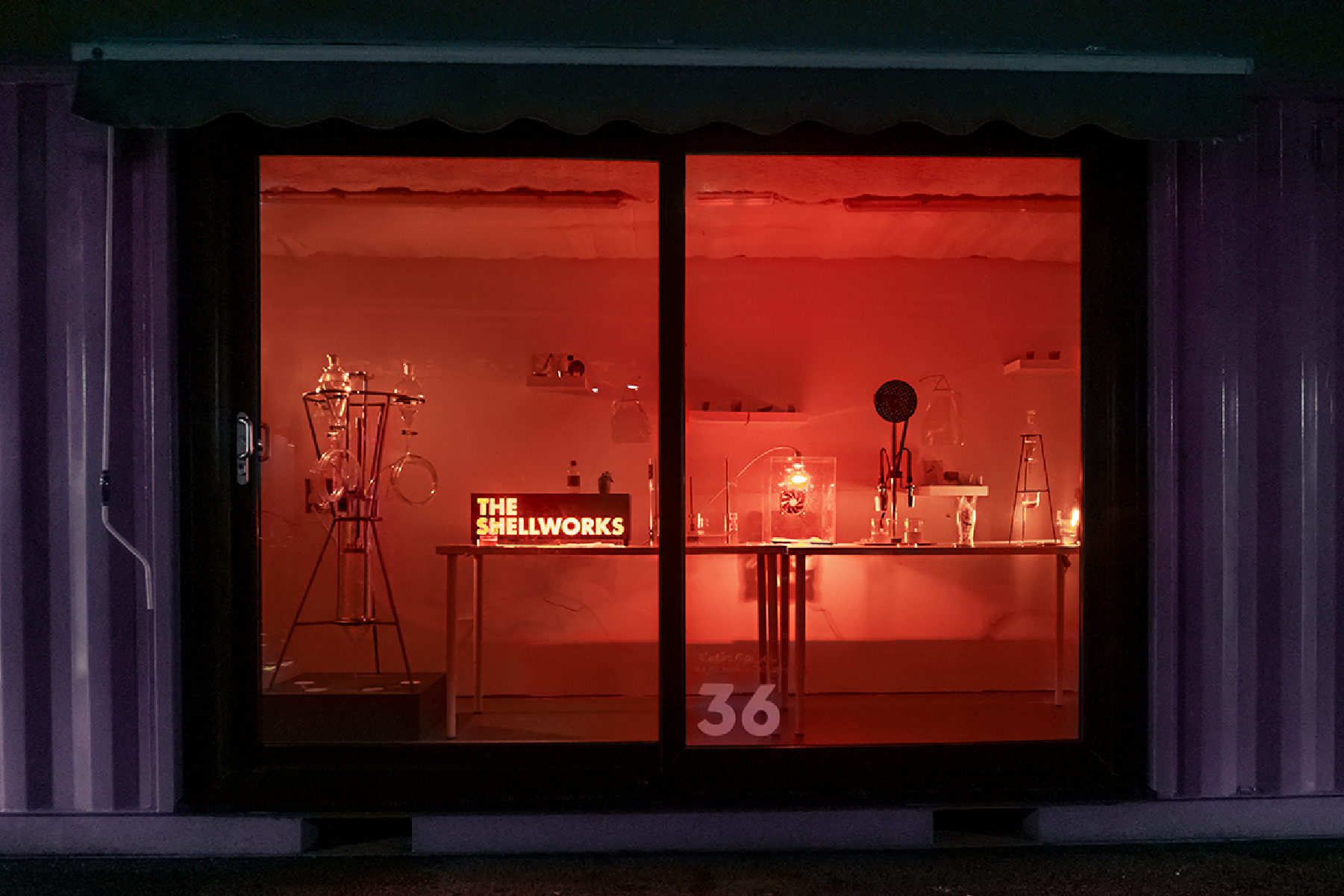AN EXPERIMENTAL PACKAGING DESIGN PROJECT THAT DEVELOPS A NEW MANUFACTURING PROCESS FOR BIOPLASTICS, USING BIODEGRADABLE WASTE LOBSTER SHELLS AS A REPLACEMENT FOR SINGLE-USE PLASTIC MATERIALS
TEXT: SUTEE NAKARAKORNKUL
PHOTO COURTESY OF THE SHELLWORKS
(For English, please scroll down)
สแตนดี้ “พี่ตูน” จากแคมเปญรณรงค์ให้ผู้ใช้บริ
แน่นอนว่าเทรนด์ที่ว่านี้ไม่ได้

The five machines created by the design team for processing waste shells, including (from left to right) Shelly, Sheety, Vaccy, Dippy, and Drippy
The Shellworks เป็นโปรเจ็คต์
ปัจจุบันในระบบอุตสาหกรรมได้นํา “ไคโตซาน” (chitosan) สารพอลิเมอร์ธรรมชาติที่
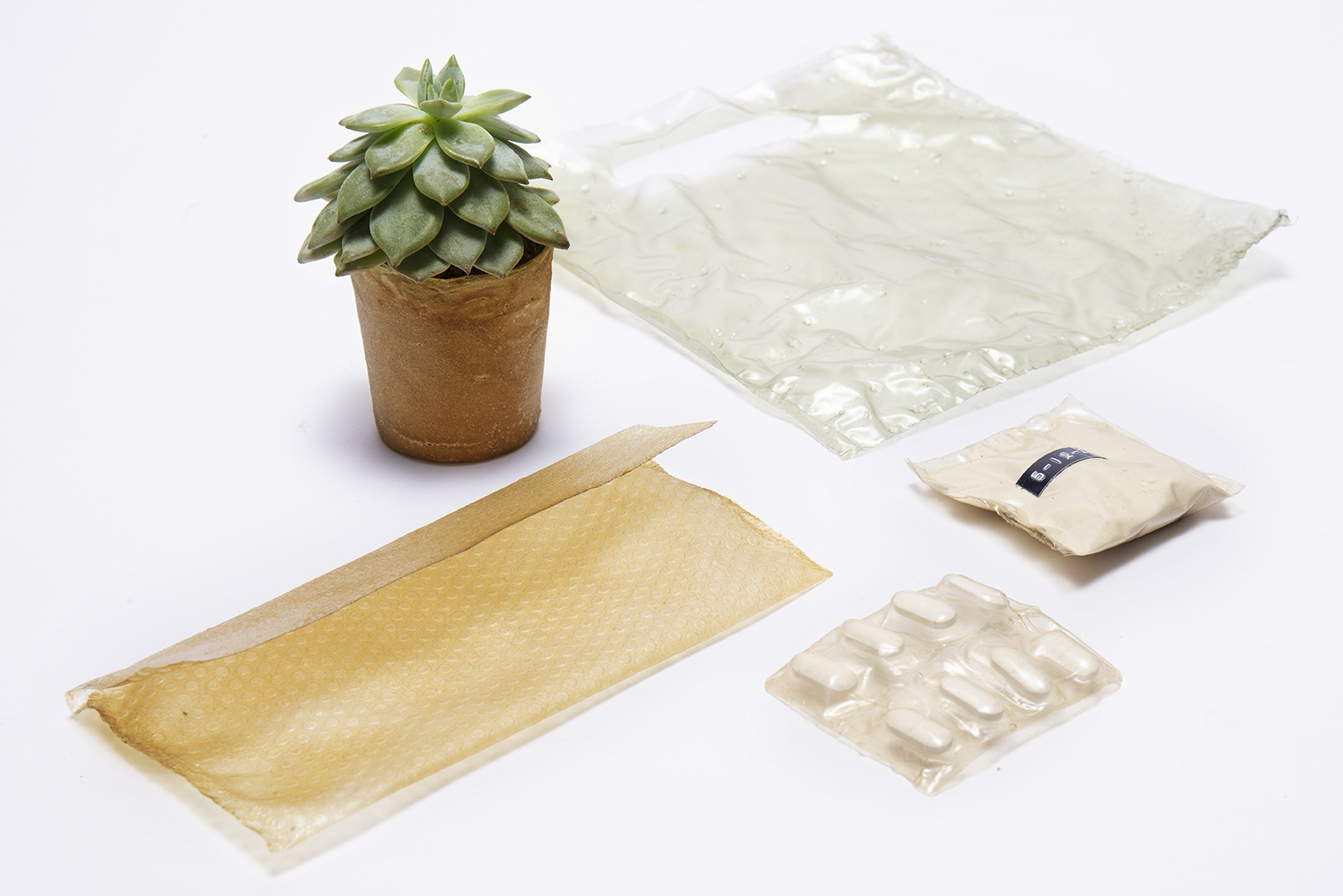
Initial sample applications made from Chitosan bioplastic
กระบวนการแปรรูปเริ่มจากการสกั
พลาสติกชีวภาพที่ได้สามารถนํ

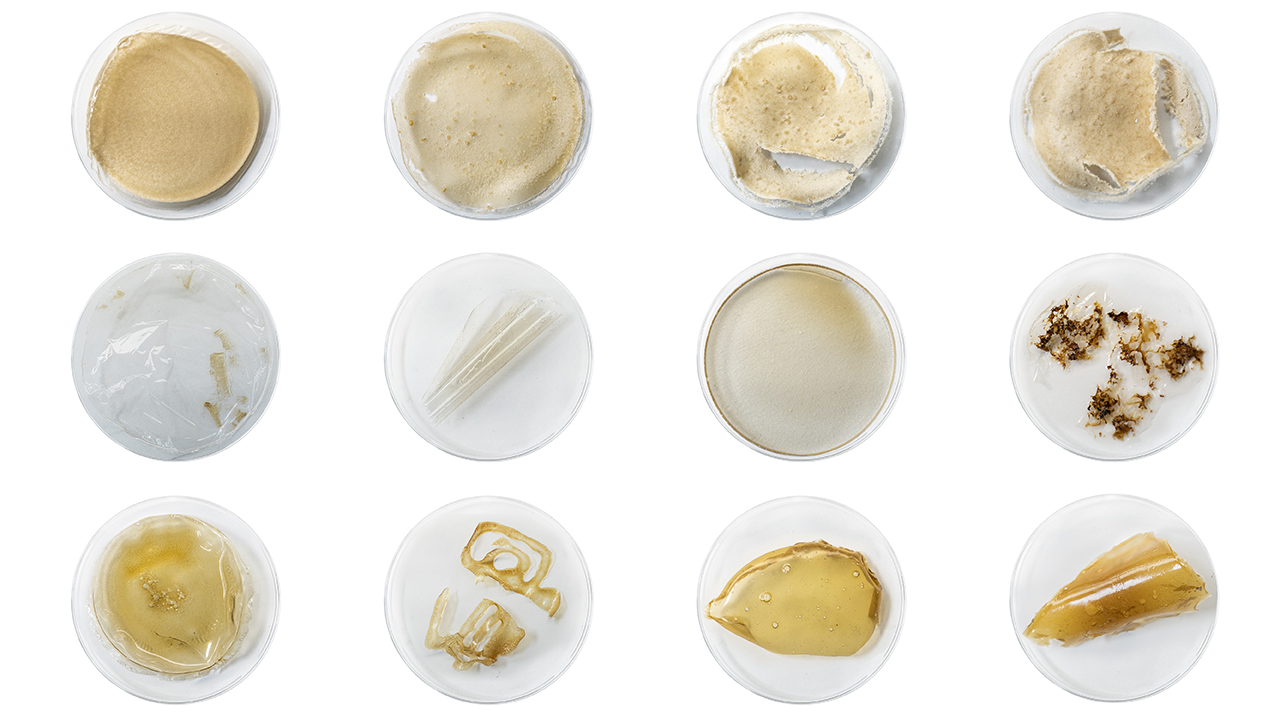
Samples showing how the material exhibits varying properties due to the different ratios of ingredients
Standees at convenience stores nationwide are all promoting rocker-turned-philanthropist “Toon” Bodyslam’s “Reduce A Plastic Bag A Day. Yes, You Can” campaign, offering a glimpse of the trend in socially responsible marketing strategies, accompanied by the cultivation of awareness about the problems caused by plastic products.
Surely such a trend didn’t just come out of nowhere. The latest statistics from the United Nations estimate that over eight million tons of plastic waste finds its way to the bottom of the ocean annually, causing the death of whales and other marine life, which are washed ashore and reported in the news headlines more frequently than ever. Nevertheless, plastic packaging does offer hygiene advantages that benefit us through the food and medicine products we consume. What we need is not a world without plastic, but the realization of the importance of waste management, and the incorporation of technology in packaging design, which can help develop new alternatives to single-use plastic products.
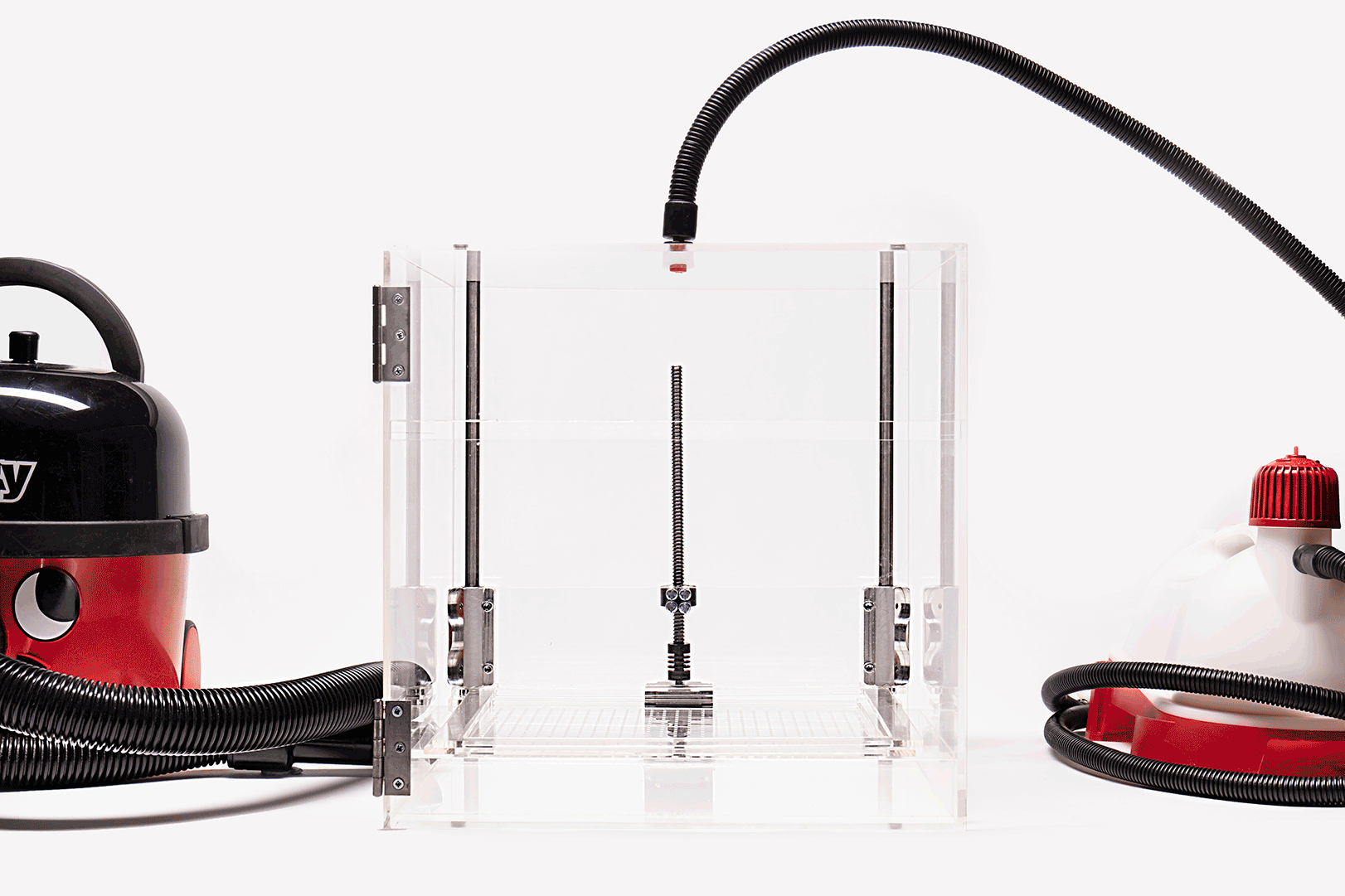
The process of Vaccy, a steam heated vacuum former leverages the material’s hydromorphic properties to make moulded packaging
The Shellworks is an experimental packaging design project led by Ed Jones, Insiya Jafferjee, Amir Afshar, and Andrew Edwards – a group of Innovation Design Engineering students from The Imperial College London and The Royal College of Art. Their intention is to develop a new manufacturing process for bioplastics, using biodegradable waste lobster shells as a replacement for single-use plastic materials. Although Chitosan, a natural polymer found in the shells of shrimps and crabs, is increasingly being used in the production of medical products, cosmetics, food, etc., the market price of extracted Chitosan is still extremely high. Therefore, the design team created five machines (named Shelly, Sheety, Vaccy, Dippy, and Drippy) to manipulate the material for varying flexibility, stiffness, thickness, and translucency.
The process begins with the machine (Shelly) doing the job of extracting Chitosan from the shells. The powdered Chitosan is then mixed with vinegar, resulting in a gooey liquid that is then transformed into materials of different physical qualities using the four other machines. Sheety is an evaporative sheet former, which works alongside Vaccy, a hydro-thermal vacuum former that forms the sheets into a pliable packaging material. Dippy is a heated dip molder. Once the molds have been dipped in the liquid and dried out, two small biodegradable plastic cups are created. Last but not least is Drippy, a hydro-recycler that recycles the material scraps. Vinegar is mixed with the scraps to turn them into a liquid form, allowing them to be used again. If they are no longer needed as a plastic material, the dissolved scraps can be diluted with water and used as a natural, non-polluting fertilizer for plants.
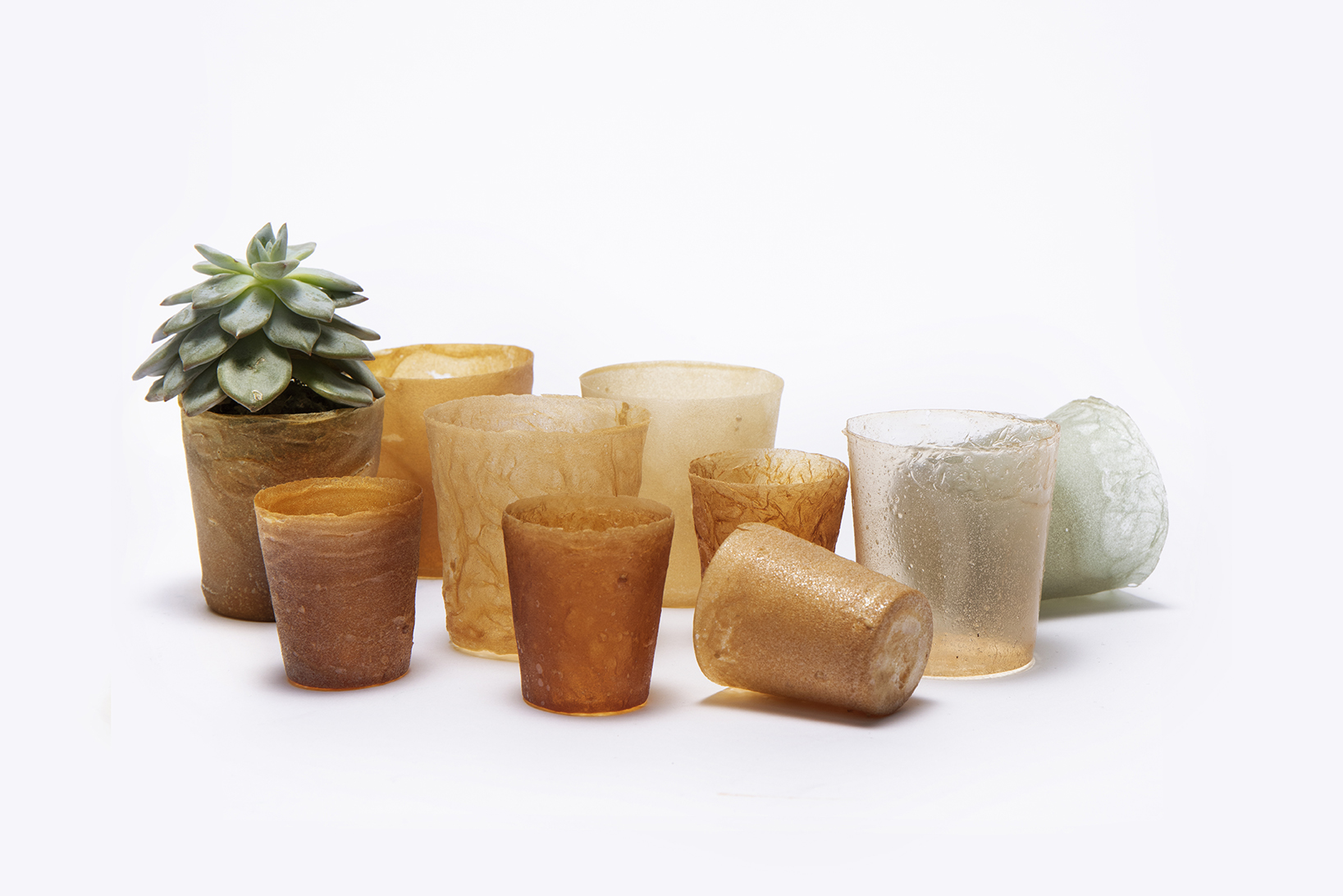
Initial sample applications made from Chitosan bioplastic
This biodegradable plastic can be used as the material for products such as cups, food and medicine packaging, with a functional efficiency that is equivalent to plastic. The whole thing may have you wondering about the limitations of the manufacturing process, as well as the cost of using waste lobster shells as a raw material. The design team explains, “By designing scalable manufacturing processes, applications tailored to the material, and eco-positive waste streams, we believe that we can demonstrate how Chitosan bioplastic could become a viable alternative for many of the plastic products we use today.” This experimental project is being developed in the hope of making this material more accessible and widely used in the future. It remains to be seen whether The Shellworks will be able to grow into an actual business with products that can substantially contribute to making the world a better place.

